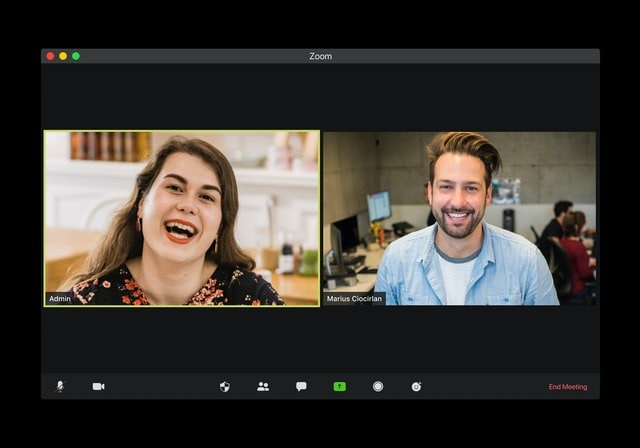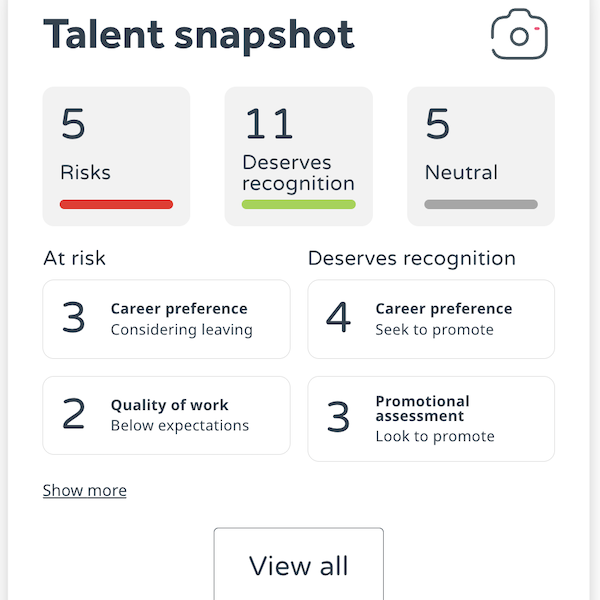Employee engagement is vital for all organisations
Among the complex challenges every business is now facing, from remote working, changing work practices to meet social distancing requirements or keeping up with evolving HR legislation – there remains one constant; the need to improve employee engagement.
This guide will explain employee engagement, why it is important, how it positively impacts productivity and what you can do to embed employee engagement best-practice in your organisation.
Quick links
How do we know if we have an engaged workforce?
How to build employee engagement
What is employee engagement?
What is employee engagement?
Employee engagement can be described as the mental and emotional connection an employee feels toward their place of work.
An engaged employee cares about their work, their colleagues and their company. They are motivated to contribute towards the success of the organisation, rather than just seeing work as a necessary evil.
To encourage engagement, the employer should have the interests of the staff at heart. This means they care about their wellbeing and ensure employees feel fully involved in the business.
“The only way to do great work is to love what you do.” – Steve Jobs
Why is employee engagement important?
The fact that employees actually want to be at work should be enough on its own. But there are plenty of tangible benefits for a business in addition to seeing smiling faces in the office.
Gallup’s State of the Global Workplace report (2017) concluded that: “Engaged employees drive high performance and innovation, and move the organisation forward.”
Businesses with engaged employees are 17% more productive
The survey also noted that engaged employees are more likely to show up to work and be more productive. Highly engaged business units experience 41% lower absenteeism and 17% higher productivity.
Cisco was named in the top ten of the Fortune 100 Best Companies to Work For 2019 after creating their “People Deal”, which was launched as a result of employees coming together and asking how they can play a part in creating the culture they want at work.
After analysing the results of the initiative, Cisco discovered the 10% least engaged individuals were 2.7 times more likely to leave than the 10% most engaged.
Disengaged employees 2.7 times more likely to leave
Engaged employees deliver higher productivity and are less likely to be absent or leave the company. They will help you recruit and prompt customer satisfaction. What’s more they are more creative and will increase your company’s competitiveness.
“When people are financially invested, they want a return. When people are emotionally invested, they want to contribute.” – Simon Sinek
The consequences of disengaged employees
The Health and Safety Executive Report 2018 reported that over half a million people in the UK are ill at any time because of work-related stress, anxiety and depression. Countless others are suffering but still at work.
Over 15 million working days a year are lost as a result of work-related stress – the ultimate cost to society is in the billions.
More than 15 million working days lost each year due to work-related stress
A recent white paper from WeThrive reveals the most important factor in employee motivation and engagement is for employees to have their underlying needs met. These needs include feeling safe, receiving recognition, knowing what management expectations are, and finding work meaningful.
If people can’t get their biological, psychological or social needs met, the result is biological stress – and a fall-off in performance. People become less collaborative and more interested in self-preservation.
This impacts businesses in a number of ways, including:
-
poorer customer experience
-
lower productivity
-
poorer performing teams
-
unhappiness in the workplace
-
decreased employee morale
-
increased staff turnover
-
increased absenteeism
How do we know if we have an engaged workforce?
One simple measurement of staff happiness is whether or not they stay!
Staff retention is probably the most effective indicator of whether staff are engaged. And now, more than ever, talent retention is paramount.
During the coronavirus pandemic, while some HR managers have quickly shifted into high gear on staff recruitment to meet increasing consumer demand, other managers are faced with the opposite scenario: a hiring freeze.
During a recruitment freeze, to keep your business running smoothly, you need to retain your existing talent, which places staff engagement right and centre of HR strategy and people management.
Although employee retention is also the worst possible way to measure employee engagement. Once someone has left it is too late to do anything to solve the problem.
Don’t wait until a key member of your team is heading for the exit before finding out why they have fallen out of love with their job.
Employee engagement case study
Retention is a key HR issue in the retail industry. Retaining shop assistants is particularly challenging and annual attrition rates often exceed 100%. Read how Konditor tackled employee engagement.
It’s actually easy to find out how engaged your employees are. You simply have to ask them.
Employee surveys are a powerful method of gathering the necessary information. But you have to ask the right questions and it needs to go further than a traditional employee satisfaction survey. You need to know when a survey is needed and how to utilise the results to make a genuine difference.
WeThrive’s employee engagement software is designed to achieve all of these objectives.
Assess how well the business is meeting staff’s cognitive, practical, emotional and social needs at work. WeThrive will tell you all you need to know, and you can try our free survey yourself. Use the resulting action plans to guide the necessary changes, and repeat the exercise periodically. Over time you will find that engagement scores improve, as will a raft of other measures, including productivity.
How to build employee engagement
Wikipedia outlines drivers of employee engagement which include perception of job importance, clarity of job expectation, career development and regular feedback. These are useful when considered alongside the key things you can do as an employer to improve staff engagement as follows:
Onboarding
Employee onboarding is the starting point for setting clear expectations. If not clear and the employee feels their expectations have not been met, that’s when disappointment starts setting in. As stated in the drivers of engagement:
“If expectations are not clear and basic materials and equipment are not provided, negative emotions such as boredom or resentment may result, and the employee may then become focused on surviving more than thinking about how he can help the organisation succeed.”
Take a deeper dive into ‘Onboarding – the hard bits made easier’
-
Line management
The role of the line manager is vital in building employee engagement. However all too often employees are promoted to line managers because they are good at their day jobs, not because they are equipped with the skills to manage.
Andrew Heath, Co-Founder of WeThrive, is passionate about creating better employee experiences in the workplace. In our post, he shares 7 seven tips to becoming a great manager as summarised:
1) Listen and act
2) Ask for feedback and stick to one to one sessions
3) Lead by example
4) Set achievable goals
5) Be consistent
6) Don’t micro-manage
7) Say thank you
Internal communications
COVID-19 has dragged many organisations kicking and screaming into the digital era, with teams now working remotely, technology is now a critical business enabler.
Aligning how you engage your remote workers to your changing business priorities, over the coming weeks and months, requires a shift in your internal communications. As experts agree, the future of work is happening now and effective communication relies on making sure your employees are aware of the your business goals, feel engaged, and see the digital transformation as an opportunity to upskill while maintaining their mental and physical wellbeing.
In this article from Smarp, 6 internal comms experts share their predictions on how the internal communication landscape may look like in a post-COVID-19 world.
Regular and constructive feedback
Listen carefully to employee feedback by gathering data about workplace culture and the environment as staff see it. What is working well for them, and what do they think needs to change? How well do the current arrangements meet their innate needs, and where are the stresses and frustrations in their working day?
Use this information to generate effective action plans for managers – so that coaching sessions and 1-2-1 meetings around performance management are informed directly by the needs of their people
For them to be effective managers, ensure line managers have access to resources to help them have conversations with their team.
Giving full disclosure of employee survey results, shared with all staff, creates trust and stimulates solution focus. Build a culture of trust, with open communication and where feedback leads to positive action and employees recognise that change will come if they provide open and honest feedback.
Saying thank you
Covid-19 has hugely impacted on people’s lives, with homeschooling, financial struggles and concerns over the health and wellbeing of loved ones, you and your teams are under a lot of strain, trying to fit in a full day’s work from home, is not as simple as it once was.
As we’ve seen with the UK’s public applaud for the NHS every Thursday during the height of the pandemic, staged because ‘they need to know we are grateful’ a small gesture of saying thank you can make a big difference.
According to research by the London School of Economics, performance-related pay often does not encourage people to work harder. Gratitude can actually be a better motivator than money.
Are the managers in your organisation saying thank you to their teams?
Tips to help managers say thank-you
- Send a thank-you card
- Give small, personal gifts, perhaps with a personalised kindbox
- Give time-off with no strings attached
- Let an employee finish an hour earlier for an informal virtual drink with their boss
Explore> how to implement a culture of gratefulness
Employee engagement case study
Each year the Personal Group recruits a set of new trainees, into what is a complex but ultimately fulfilling job. Historically it has been hard to keep them long enough for them to become fully integrated into the company – last year, for example, over 30% had left by half-way through year one. Read how the Personal Group reduced staff churn from 30% to less than 5% .
Management practice
Getting buy-in
If you’re not the main decision-maker, build buy-in from your company leaders, the board and CEO around the improvements they would like to see.
Identify where business performance is being negatively affected – which teams, departments or divisions. Focusing on a smaller number of high impact areas will enable you to have a greater effect with the resources you have available.
Naturally there will be company wide themes that you can address as part of the project – but making visible improvements in weak areas of the business around retention, productivity or absence will build the case for future investments in your people strategy.
Employee engagement goals
Don’t assume that improving ‘engagement’ is a useful end in itself. Identify your key measures, and make them hard, measurable quantities around business outcomes:
GOAL: reduce levels of regretted loss* in sales
GOAL: reduce unplanned sickness and absence
Then establish what level of ROI you need to achieve to make the exercise worthwhile:
ROI: savings in recruitment costs, lost productivity and increase in sales. * Be sure to distinguish between regretted and non-regretted losses – the regretted losses are the people who you would rather have retained.
Because any changes are driven by employee sentiment, the resulting improvements are sustainable. Further feedback from the resulting KPIs shows the effect of stressing the staff and confirms / modifies the approaches taken by the organisation and by individual line managers.
Employee engagement case study
Best known in the US for its outdoor-wear, Patagonia has also been making waves in the world of employee engagement and employer branding. Business success and a remarkably low employee churn are testimony to their success.
Employee engagement a summary
Employee Engagement is important, but it is not a thing you can affect directly, it is a consequence of getting other things right.
A company’s engagement score is a marker of how well the culture and environment meet the bio-psychosocial needs of the employees. When these needs are met staff will be innately motivated to group together and do things that are interesting and useful. Otherwise they will feel stressed and be likely to behave in ways that are less helpful to the business, with intelligence, collaboration and creativity being particularly compromised.
How can we help?
An employee engagement survey will do half the work, giving you an overview of how people are feeling, but WeThrive goes further, giving you the reasons why employees feel as they do. What’s more, it gives you or your managers prompts for coaching conversations, so that when they sit down in group or one-to-one meetings they have the inside information they need to make those conversations produce improvements.
Why not try a WeThrive demo survey or book a demo with one of our friendly consultants?






